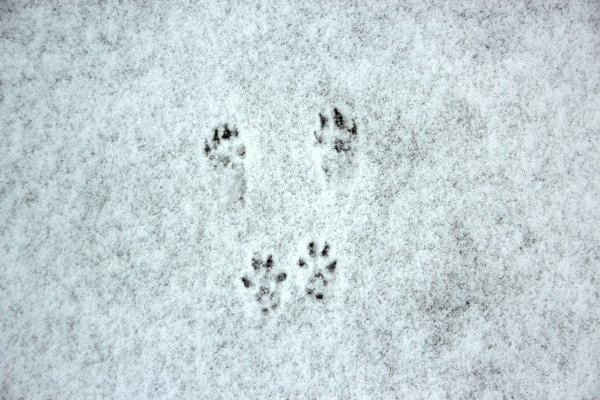Following the bushy-tailed in winter
The footprints left in snowdrifts tell us about the activity of the small animals living in the Latvia’s forests. Some of the footprints belong to the red squirrel or Eurasian squirrel (Sciurus vulgaris), which in winters changes its red-brown summer coat to the much warmer grey coat, and therefore is difficult to be seen in the bare tree branches. However, the footprints left in the snow can tell us some yet unread stories.
The Eurasian or red squirrel is one of the almost two hundred seventy sciuridae family rodents known in the world - a slim, 18-25 centimetres (excluding the tail) long, 200-400 grams heavy animal - the most typical representative of the squirrel genus, which altogether includes thirty different species. The squirrel is very similar to the other rodents, but unlike beavers or mice, it has a large tail and tufted ear tips.
Gambols like a hare
Taking a closer look at the position of the footprints left by the squirrel, it well shows that the hind legs of the squirrel go before the front legs (just like the hare’s legs). Therefore, when on the ground the squirrel moves the same way as the hare. Besides, the faster the animal gambols, the greater the distance between the prints of the front and hind legs. In addition, the footprints show that only four fingers of the forelegs are developed, but the first (the thumb) is practically invisible. Hind feet are long; all fingers are well-developed with slim, sharp, long and crooked claws.
In winter, following the footprints left by the squirrel one can be lucky and hit some of its favourite places, which - as shown by the signs – are visited by the squirrel quite regularly. Namely, if the squirrel finds, for example, an antler shed by an elk, stag or buck, or a skeleton or skeletal remnants of an animal, it comes back time to time to its finding, and... gnaws it. Why? Because, by gnawing antlers or bones the animal gets all the necessary minerals and - no less important - sharpens its incisors. The squirrel as a rodent has four long inward curved incisors: two in the maxilla, and two in the mandible.
A busy squirrel snow-diving, trying to find a snack under the thick snow cover has been captured by an Estonian natural scientis
In the squirrel's mouth there are special muscles, needed for eating acorns and hazelnut seeds. The muscles are used to squeeze together the upper incisors. To get to the kernel, the squirrel holding a nut in its paws, settles comfortably on a tree branch, approximates the teeth and bites into the shell, and then again moves the teeth back into their regular position. The shell cracks. Now, little by little, piece by piece, it can finally enjoy the delicacy.
In winter the squirrel feeds mainly on seeds of conifers. It gnaws them out of pine, spruce and larch cones. Holding the cone with its front legs, the squirrel bites off the cone, grips it in its teeth and jumps to a previously selected horizontally growing branch, settles there safely (sitting down and balancing the position with the tail), takes the cone in its hands, quickly turns it around and gnaws it - quickly, quickly shells it seed by seed. It takes just two, three minutes, and the cone is emptied, leaving only a finely nibbled core; and the squirrel is off to look for the next cone.
Its tail has three basic functions
The squirrel spends most of its life in trees. That is why it has so springy hind legs, flexible fingers and sharp claws, but the tail serves as an excellent stabiliser of the body or a balance retention tool, as a steering wheel, and to some extent even as a glider. The squirrel needs to keep its balance both when sitting on the branches and when walking or running around in the branches, and in particular - through the small, fragile sprigs. All the three basic functions of the tail are used for leaping - it serves as a balance stabiliser, a steering wheel and a glider required for leaping from branch to branch, from tree to tree, and rarely - from a tree to the ground. Of course, for a leap to be successful, also a decent take-off and run-up is needed! The run-up along a horizontal, thick branch is followed by a great leap to another - even a three-four meters distant tree - to a branch of the same height. When sloping downward the squirrel can glide even more than ten meters away!



